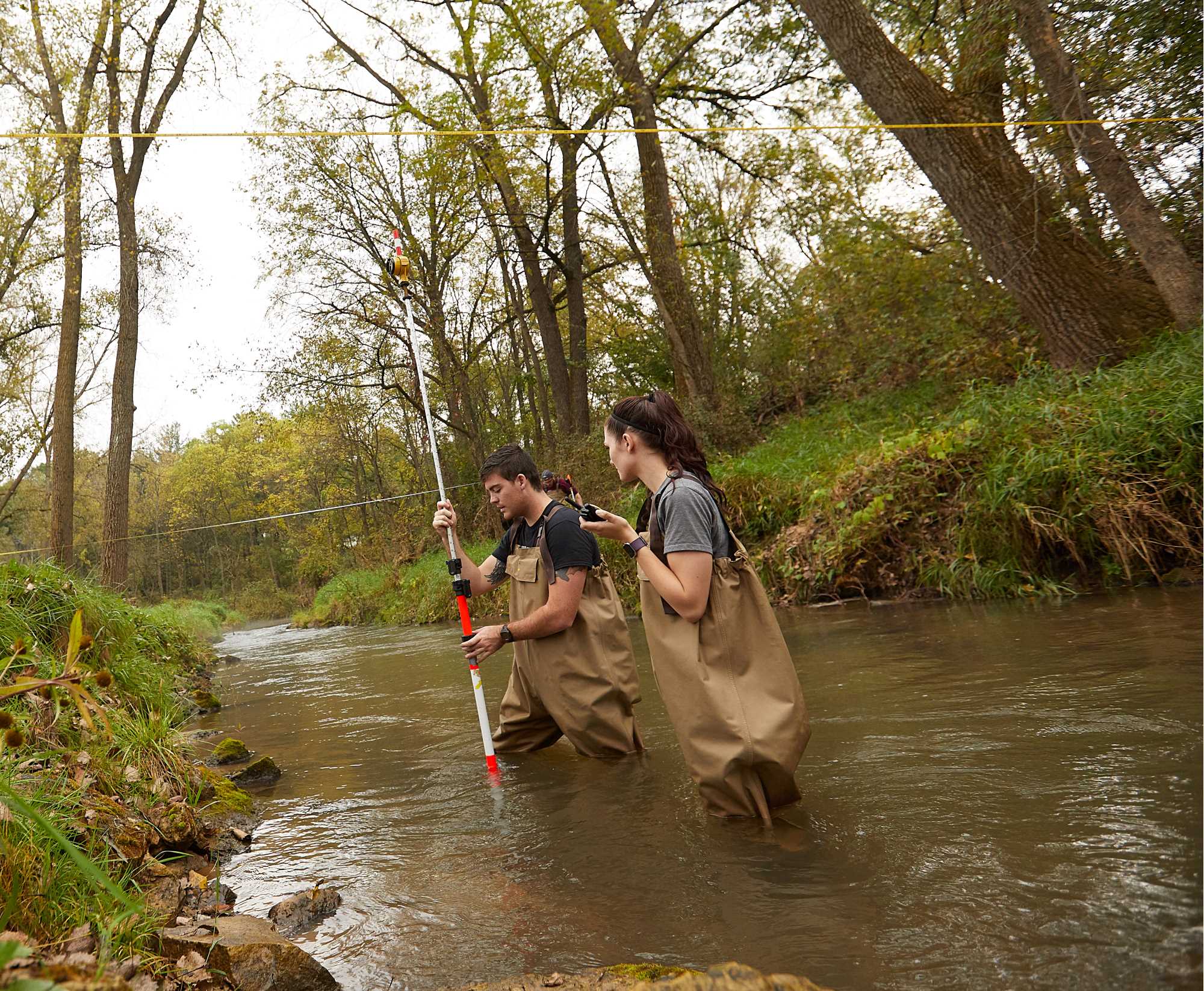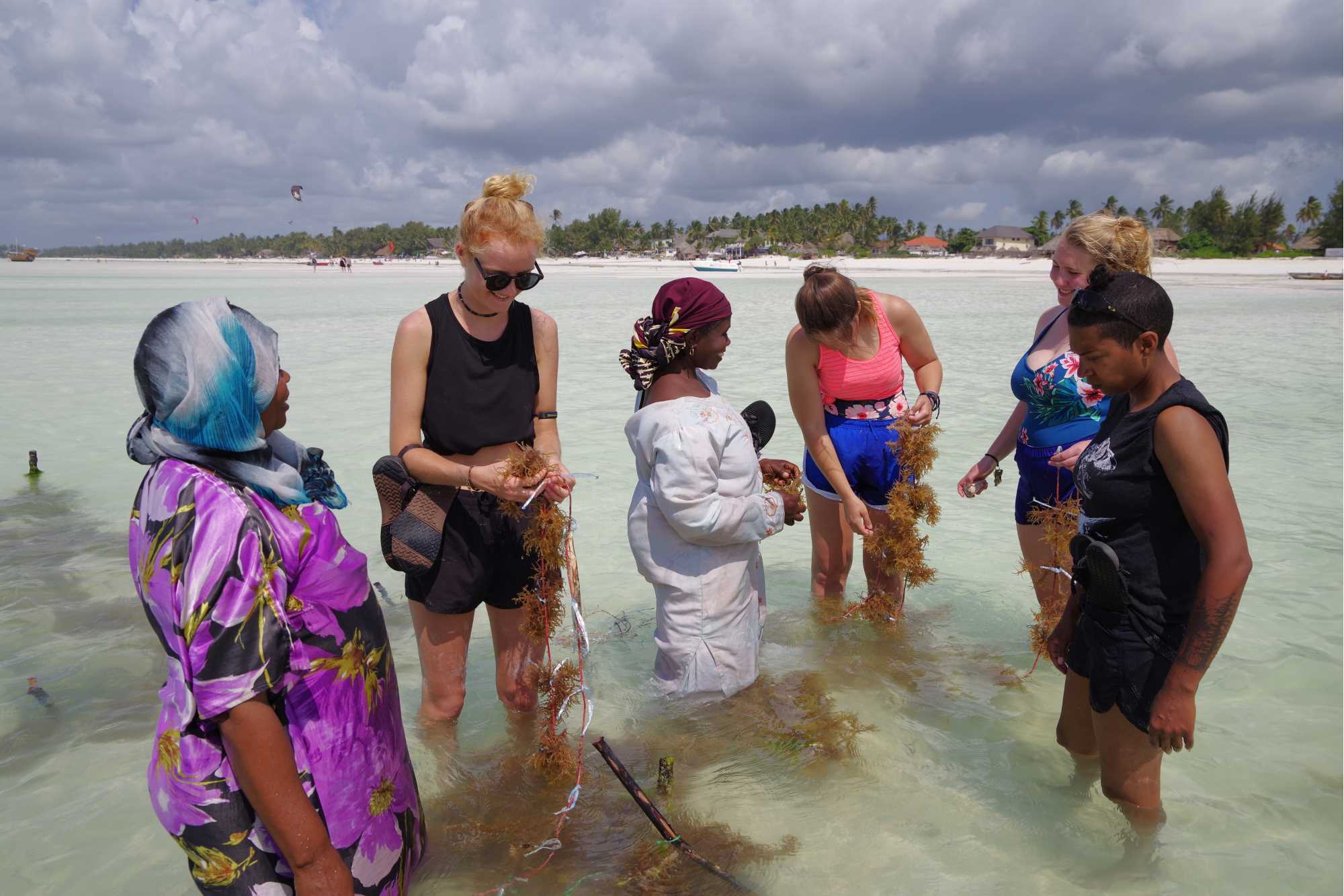Geography program
Geographers study the relationship between humans and their environment.
If you want to gain skills to address pressing environmental and societal issues such as climate change, natural disaster management, population growth and globalization, geography might be the right field for you.
Students in UW-La Crosse’s Geography and Environmental Science Program gain experience using the latest technology to solve problems in their environment. They have access to professional Geographic Information System (GIS) software, drones and other high-end field equipment. Students and instructors work together to understand past and present environmental and societal conditions while developing strategies for building a more resilient and sustainable future. The program has taken students into the local community and all over the world — from the study of environmental contamination in local wetlands to the impact of climate change in the Himalayas.
Geography
Geography is the science of place and space. Geographers ask where things are located on the surface of the Earth, why they are located there, how places differ from one another, and how people interact with the environment. Geographers have skills in cartography and Geographic Information Systems (GIS). There are four main branches of geography: human geography, physical geography, environmental geography, and geographic information science (GIS).
Learn more for GeographyEnvironmental Science Concentration
Environmental science applies knowledge from the natural sciences to understand issues in the environment with the goal of protecting the Earth and human health.
Undergrad major View a sample plan for Environmental Science Catalogfor Environmental ScienceGeographic Information Science Concentration
Undergrad major Undergrad minor Undergrad certificate View a sample plan for Geographic Information Science Catalogfor Geographic Information ScienceHumans & the Environment Emphasis
Undergrad major Undergrad minor View a sample plan for Humans & the Environment Catalogfor Humans & the EnvironmentA program within the Department of Geography & Environmental Science
Careers in geography and environmental science
Career opportunities for geographers and environmental scientists have increased as our society has placed a need on understanding our environment and careful planning of our land — both locally and internationally. The U.S. Bureau of Labor Statistics expects growth in geography-related jobs in the next decade.
Theories and skills learned in geography apply to a broad range of occupations. Our graduates have gone on to work for private businesses, government and non-profit agencies. For more details on alumni careers and wages visit the Geography & Environmental Science careers page. Geography career information is also available on the American Association of Geographers career page.
Positions
- Geographic Information Systems (GIS) Specialist
- Environmental scientist
- Remote sensing specialist
- Natural resource manager
- Hydrographic surveyor
- Urban or regional planner
- Cartographer
- Conservation planner
- Hydrologist
- Forester
- Unmanned aerial vehicle (UAV) specialist
- Environmental consultant
- Surveyor
- Sustainability coordinator
- Transportation planner
- Natural & cultural resource mapper
- Meteorologist or climatologist
- Park ranger
Graduate school preparation
UWL's Geography and Environmental Science program provides a solid foundation for students who plan to pursue graduate school in a variety of fields. They may seek additional training in geography or environmental science, or obtain a graduate degree in areas such as urban planning, transportation, water resource management, hydrology, sustainability, forestry, sociology, anthropology, and environmental law.
What distinguishes UWL's Geography & Environmental Science program?
- Two state-of-the-art GIS computer labs, each with over 30 high-powered computers with cutting-edge, industry-standard software.
- Physical Geography and Environmental Science classrooms in the modern Prairie Springs Science Center outfitted for performing physical, chemical and biological analysis of soils, sediment and water. The labs contain an extensive rock and mineral collection, a wide variety of tools for hands-on learning of climate and Earth surface processes, computers loaded with physical geography and GIS-related software, two stream tables, and an augmented reality sandbox.
- The Physical Geography Research Lab supports hands-on research for students and faculty. This modern wet lab provides the materials and facilities to analyze soils and sediment cores. Students have access to up-to-date scientific instruments to study past and present environments.
- On-campus weather station. This station is run by the Geography & Environmental Science Department.
Dedicated instructors devote considerable amounts of their time to individual students inside and outside of the classroom.
UWL’s campus is located within a mile of towering sandstone bluffs, a 900-acre urban wetland, and the Mississippi River, all accessible through miles of hiking and biking trails. Students regularly explore the La Crosse area’s urban and natural landscape through course projects, field trips, and research projects.
Students have the opportunity to work on local and international research projects on undergraduate research projects. Students regularly receive funding to support their efforts and to present their results at local and national conferences
Students have opportunities to participate in small group extended field trips to selected parts of the U.S. and abroad. Geography and environmental science students have traveled to study and conduct research in places such as Tanzania, Nepal, Belize, Cook Islands, Iceland, and Puerto Rico.
Students seeking internships typically find them as the demand for interns in this field is strong whether searching for opportunities in the private sector or with government agencies. Internships prepare students for future careers and frequently lead to employment opportunities after graduation
Students have access to field equipment including boats, unmanned aerial systems (drones), field mapping and surveying technology, sediment and soil sampling equipment, sonar for aquatic mapping, and much more.
A variety of scholarships are available for geography and environmental science students. UW-La Crosse also has a searchable database of scholarships.
The Geography & Environmental Science Department offers a wide variety of majors, minors and a certificate option.

















